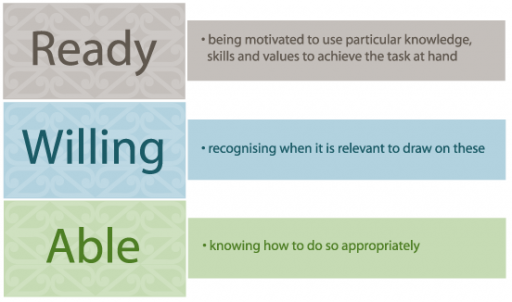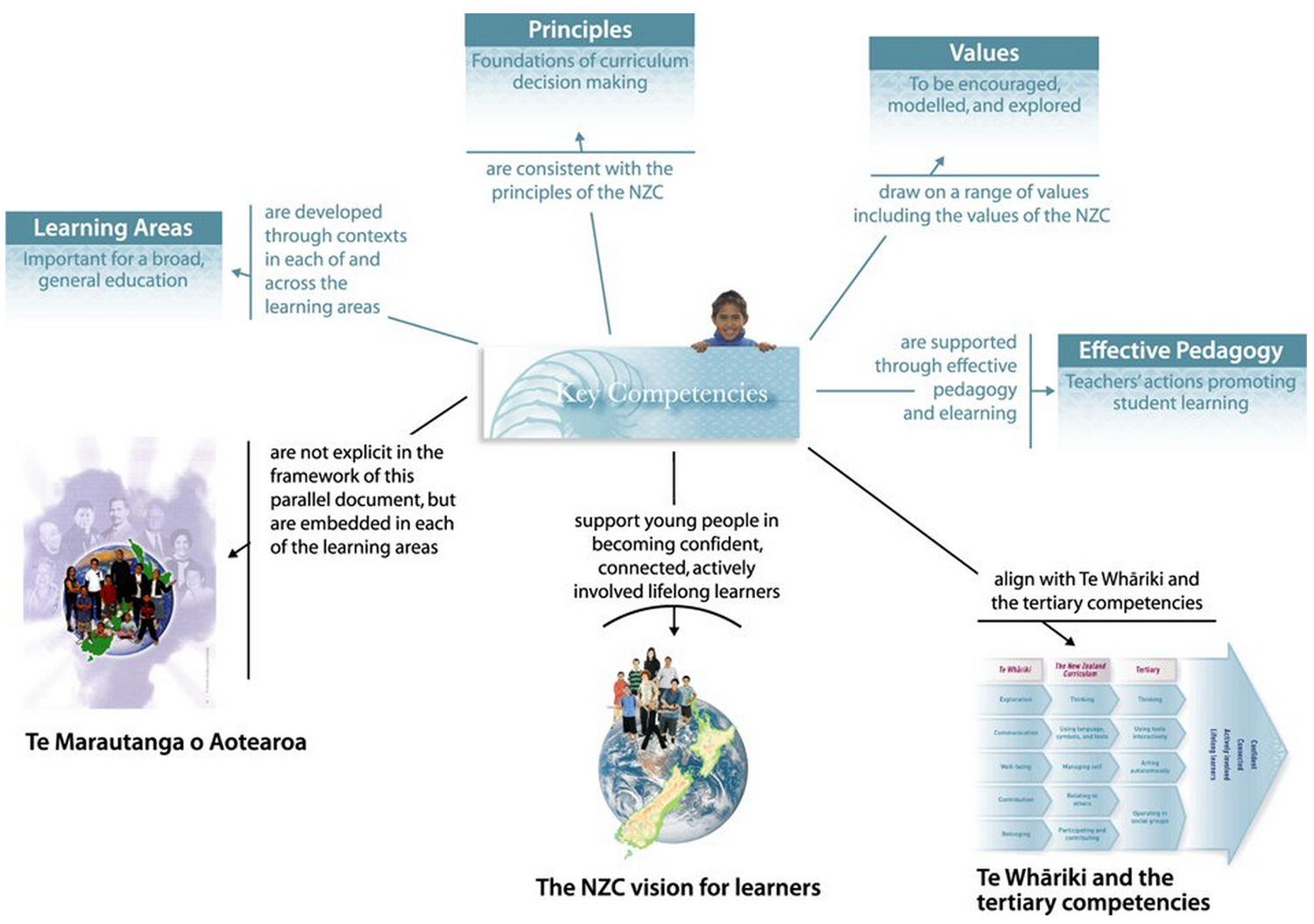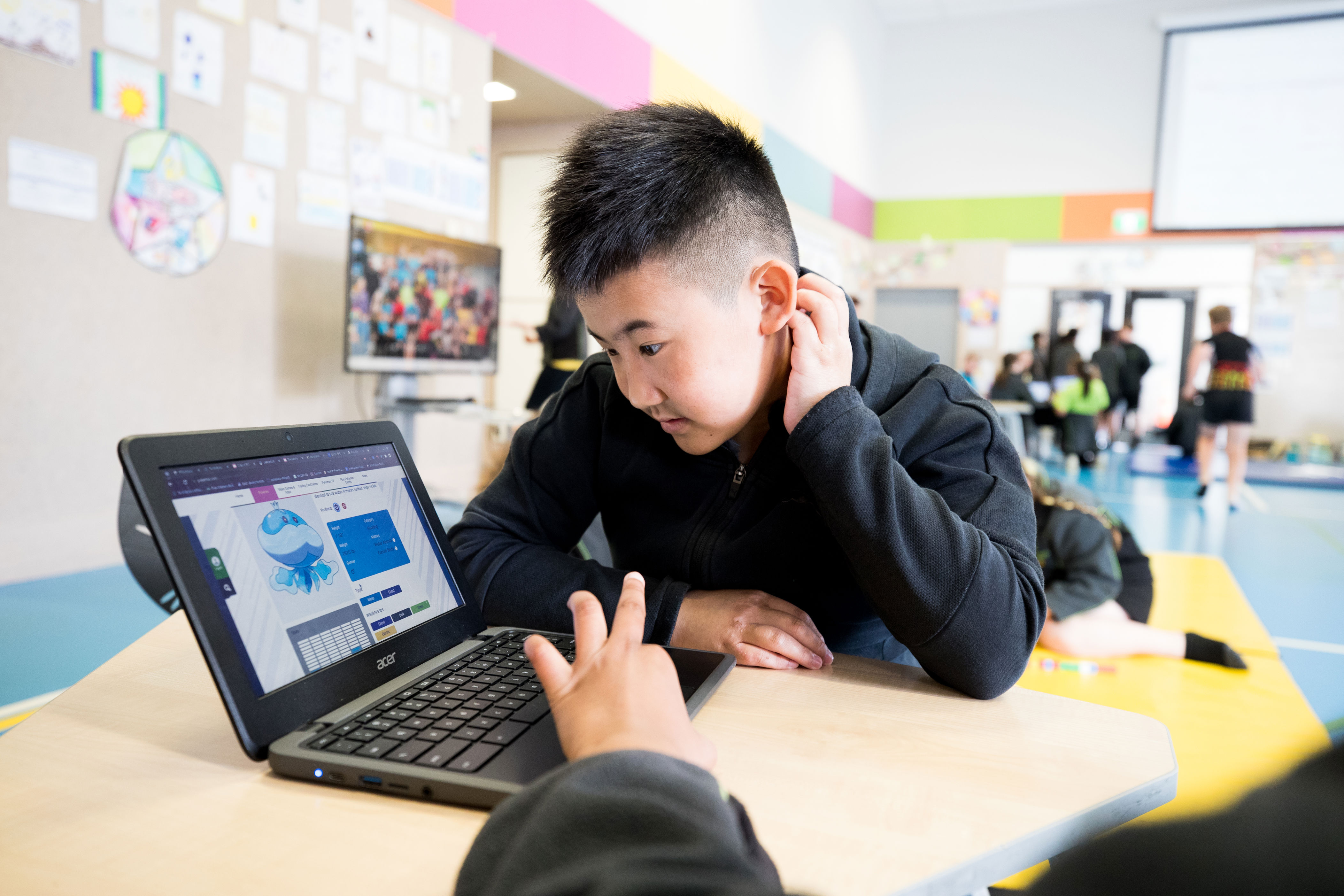Key competencies – New Zealand Curriculum
An explanation of the key competencies, why they matter, and how they were developed and evolved. The page includes a video by Mary Chamberlain, Ministry of Education, which provides a brief description of the key competencies and explains their importance for employment and personal well-being.

About this resource
The 2007 New Zealand Curriculum identifies five key competencies—the capabilities people have and need to develop to live and learn today and in the future.
Key competencies – New Zealand Curriculum
This page offers stories and resources to help you consider and embed the key competencies within The 2007 New Zealand Curriculum.
- About
- Tools
- Examples
- Resources
About the key competencies
Key competencies are the capabilities people have, and need to develop, to live and learn today and in the future.
The 2007 New Zealand Curriculum identifies five key competencies:
- Thinking
- Relating to others
- Using language, symbols, and texts
- Managing self
- Participating and contributing
This video with Mary Chamberlain, from the Ministry of Education, explains the importance of the key competencies for employment and personal well-being.
Key competencies put ākonga and their learning process at the centre of education. As society constantly changes, so does technology and ways of viewing knowledge. It is no longer sufficient for students to merely acquire knowledge and master skills. Learners need opportunities to develop their capabilities as users of knowledge and skills in wide-ranging contexts now and in the future. A focus on the key competencies means a development of the dispositions students need to learn throughout their lives in this changing world.
The key competencies give practical effect to Te Tiriti o Waitangi by ensuring ākonga understand how they learn in partnership with kaiako. Learners need to know how to develop the key competencies in all learning areas, with their friends, whānau, and in the community.
In this video, Secretary for Education Karen Sewel (2006-11) explains the importance of building an education system that helps students learn how to learn and manage the demands of a changing world.
Margaret Carr explains that dispositions developed through the key competencies mean students are ready, willing, and able to learn:

How the key competencies evolved
See Materials that come with this resource to download:
- How key competencies are treated in the OECD (.pdf)
- How the key competencies evolved over time insights from the research (.pdf)
- How the key competencies were developed the evidence base (.pdf)
- Weaving key competencies into the curriculum examples from other nations (.pdf)
These papers were developed to demonstrate the intent and evidence base of the key competencies. They provide a view of current practice to help inform discussions in your kura.
Key competencies:
- should be developed and promoted through a school's local curriculum
- encompass knowledge, skills, attitudes, and values
- work together and influence each other
- are demonstrated in performance; they require action
- are developed through learning experiences that reflect the diversity and support the cultural identity of every ākonga
- should be accessible to meet the range of learning needs of all students
- are complex and changing; they will look different in different contexts .
Key competencies relate to all other aspects of the curriculum




